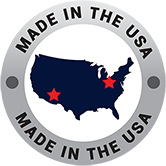6 Causes of Thermocouple Measurement Errors—and How to Prevent Them
Learning how to wire a thermocouple correctly is essential for precise temperature measurement in industrial applications. Proper thermocouple wiring ensures accurate readings, enhances system reliability, and prevents costly errors in furnaces, heat treatment processes, and aerospace equipment.
Understanding Thermocouple Basics
A thermocouple consists of two dissimilar metal wires joined at one end. When this junction experiences temperature changes, it generates a voltage that correlates to temperature. Proper installation requires careful attention to wire selection, polarity, and connections.
Step 1: Select the Correct Thermocouple Type
Each type uses specific metal combinations:
- Type K (Chromel/Alumel) – General purpose, up to 1350°C
- Type J (Iron/Constantan) – Reducing atmospheres, up to 760°C
- Type T (Copper/Constantan) – Cryogenic applications, up to 400°C
- Types R, S, B (Platinum alloys) – Ultra-high temperatures, up to 1800°C
Wire Grades:
- Thermocouple Grade: High-precision wire for sensing areas
- Extension Grade: Economical option for long runs to control equipment
Step 2: Understand Color Coding and Polarity
ANSI Color Coding:
- Type K: Yellow jacket, Yellow (+) and Red (-) conductors
- Type J: Black jacket, White (+) and Red (-) conductors
- Type T: Blue jacket, Blue (+) and Red (-) conductors
Critical Rule: Red wire is always negative in ANSI standards—opposite of typical electrical wiring. Reversing polarity causes inverted readings.
Step 3: Choose Wire Insulation
Select based on operating environment:
- PVC: Up to 100°C, flexible, chemical resistant
- Teflon: Up to 200°C, excellent chemical resistance
- Fiberglass: Up to 480°C for higher temperatures
- Ceramic: Above 500°C for extreme environments
Add braided shielding for electromagnetic protection or armor for physical protection.
Step 4: Plan Installation Route
- Minimize wire length to reduce noise
- Avoid running parallel to power cables
- Use dedicated conduits when possible
- Plan for thermal expansion
- Ensure adequate bend radius
Step 5: Make Proper Connections
Connection Options:
- Bare Wire: Direct terminal connections. Most economical but requires skilled installation.
- Connectors: Standardized pairs specific to each type. Quick, foolproof connections.
- Heads: Protective enclosures for terminals and transmitters. Weather protection and component space.
Connection Guidelines:
- Strip wire carefully
- Use thermocouple-rated terminals
- Maintain correct polarity
- Ground at ONE point only to avoid loops
Cleveland Electric Laboratories provides clearly marked leads and comprehensive installation documentation to prevent wiring errors.
Step 6: Consider Signal Transmission
For long runs or noisy environments, use transmitters to convert millivolt signals to 4-20mA:
Benefits:
- Immune to voltage drops
- Standard control system interface
- Built-in fault detection
- Reduced electrical noise
Mount transmitters close to sensors and configure for correct type and range.
Step 7: Test Your Installation
Pre-Energization:
- Verify polarity throughout circuit
- Check connection continuity
- Confirm type settings in controls
- Test insulation resistance
Functional Testing:
- Apply known temperature sources
- Compare against reference instruments
- Test system response
- Document baseline readings
Common Problems to Avoid
- Incorrect polarity: Inverted readings
- Mismatched types: Measurement errors
- Ground loops: Electrical noise
- Poor connections: Intermittent signals
CEL Advantage: Cleveland Electric Laboratories stocks thermocouple and extension wire in all standard calibrations (B, C, E, J, K, N, R/S, T). Our wire undergoes testing in our ISO/IEC 17025-accredited lab and meets special limits of error specifications. Custom assemblies available.
Advanced Applications
High-Temperature: Use ceramic insulation and platinum-based thermocouples for extended high-temp service.
Precision: Minimize connections and specify special limit of error wire for tight tolerances.
Harsh Environments: Select appropriate sheath materials and armored cable protection.
Professional Support
Cleveland Electric Laboratories brings over 100 years of thermocouple expertise to aerospace, power generation, and industrial applications. Our ISO/IEC 17025, ISO 9001, and AS9100D certifications ensure quality at every step.
From wire selection to final connections, CEL delivers accurate, reliable temperature measurement systems. Our engineers provide support from specification through installation.



